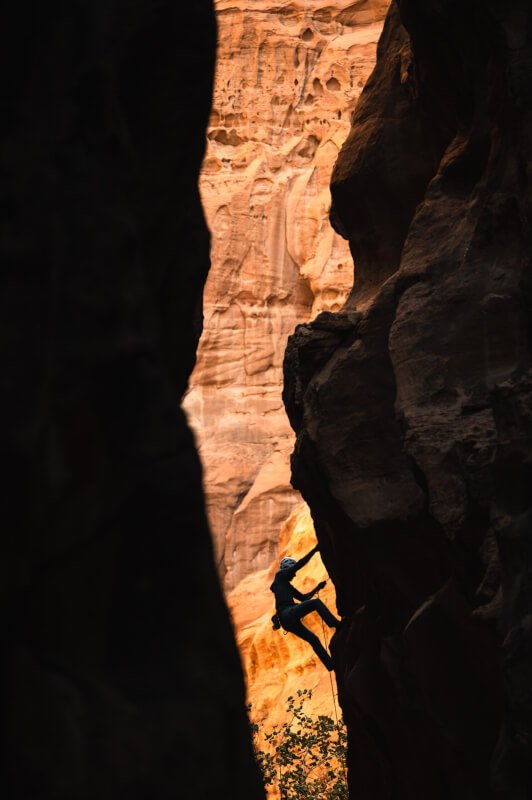Transform your home gym into an exciting adventure with a DIY rock climbing wall! In this step-by-step guide, we’ll show you how to create a thrilling climbing experience right in the comfort of your own home. From choosing the perfect spot to installing sturdy handholds, we’ll walk you through each stage of the process. So, grab your tools and get ready to conquer new heights in your very own DIY home gym rock climbing wall!

Choosing the Location
When embarking on the journey of building your own rock climbing wall at home, the first step is to choose the perfect location for it. Consider a space that is easily accessible and large enough to accommodate the size of the climbing wall you desire. Whether it’s in your basement, garage, or spare room, make sure you have a clear understanding of the available space before proceeding.
Once you have identified the area, it’s important to consider the structural integrity of the wall. Ensure that the chosen location can support the weight and strain of a climbing wall. Check for any signs of weakness or damage, such as cracks or moisture, which could compromise the safety and stability of your homemade climbing wall.
Lastly, don’t forget to check for any obstructions that might hinder your climbing experience. Make sure there are no pipes, electrical outlets, or other elements that could get in the way of your climbing routes. Taking these factors into account will help you choose the ideal location for your DIY home gym rock climbing wall.
Designing the Wall
Designing the wall is an exciting part of the process, as it allows you to unleash your creativity and customize your climbing experience. Start by determining the size of the wall based on the available space in your chosen location. Consider the height and width you desire, keeping in mind your own climbing abilities and preferences.
Once you have finalized the size, researching different climbing wall designs can provide you with inspiration and ideas for your own creation. Whether you prefer a simple plywood wall or a more intricate design with overhangs, arêtes, and other challenging features, the options are endless. Browse through various designs online or consult climbing-specific resources for guidance.
A helpful step in the design process is sketching out the wall layout. Use graph paper to accurately draw the dimensions and layout of your wall, including any additional features you might want to incorporate. This will give you a visual representation of your climbing wall and allow you to make any necessary adjustments before construction begins.
Another crucial aspect of the design is selecting the appropriate climbing holds. These grips are attached to the wall and provide the handholds and footholds necessary for climbing. Consider the difficulty level you desire and choose a variety of differently shaped and sized holds to cater to climbers of all abilities. This will make your climbing wall enjoyable for both beginners and experienced climbers.

Gathering Materials and Tools
Before diving into the construction process, it’s essential to gather all the necessary materials and tools required for building your rock climbing wall. Depending on the design and size of your wall, you will need various materials such as plywood, screws, anchors, climbing holds, and a climbing wall coating.
Compile a list of the required materials and ensure you have everything on hand before starting the project. This will save you time and allow for a smooth construction process without any unnecessary delays. Additionally, gather the tools needed, such as a drill, saw, level, measuring tape, and wrenches, to ensure you have everything you need to assemble your climbing wall.
It’s also essential to check for any additional safety equipment that may be required. This could include crash pads or mats to provide cushioning in case of falls, safety ropes or harnesses to secure climbers, and padding for surrounding areas to minimize the risk of injury. Prioritizing safety throughout the construction process is vital to ensure a safe and enjoyable climbing experience.
Preparing the Surface
Preparing the surface is a crucial step to ensure the longevity and functionality of your rock climbing wall. Start by inspecting the wall surface for any imperfections or damage that could impact the adhesion of the materials. Clean the surface thoroughly to remove any dust, dirt, or debris, as these can affect the performance of the climbing holds.
If you come across any protrusions or hazards on the wall surface, it is important to address them before proceeding. Smooth out any bumps, fill in any holes, and repair any damage to create a flat and safe climbing environment. Taking the time to prepare the surface properly will result in a more secure and enjoyable climbing experience.
Applying a suitable climbing wall coating is the final step in the surface preparation process. This coating enhances the grip of the climbing holds and provides a more realistic climbing experience. Choose a coating specifically designed for rock climbing walls and apply it according to the manufacturer’s instructions. This will ensure optimal performance and durability.

Constructing the Frame
The frame is the backbone of your rock climbing wall, providing the structure and support necessary for safe climbing. When constructing the frame, you have the option to choose between a freestanding frame or one that is attached to an existing wall. Consider your space constraints, budget, and preferences when deciding on the type of frame that suits your needs.
Start by measuring and cutting the frame materials according to your desired wall size. Use a saw or other appropriate cutting tools to ensure accuracy. Once all the pieces are cut, follow the design layout and assemble the frame according to your sketch. Ensure that the frame is level and sturdy, as this will have a direct impact on the safety and functionality of your climbing wall.
After constructing the frame, it’s time to secure it to the wall. Use screws, anchors, or brackets to firmly attach the frame to the chosen location. Double-check the stability and make any necessary adjustments to ensure a solid connection. Properly securing the frame is crucial for a safe climbing experience and will provide the necessary support for the rest of the construction process.
Installing the Climbing Holds
Installing the climbing holds is an exciting moment in the construction process, as it brings your DIY rock climbing wall to life. Start by determining the placements of the holds on the wall. Consider the climbing routes you want to create and strategically position the holds accordingly. Add a mix of handholds and footholds, varying in difficulty, to cater to climbers of all skill levels.
Setting up anchor points is the next step in installing the climbing holds. Depending on the design and material of your wall, there may be pre-drilled holes or designated anchor points for the holds. Follow the manufacturer’s instructions or consult climbing-specific resources for guidance on properly installing the anchor points.
Once the anchor points are in place, secure the holds to the wall using the provided screws or bolts. Ensure that each hold is tight and secure, with no wobbling or movement. Test each hold as you go along to guarantee its stability and functionality. Installing the climbing holds properly will result in a challenging and enjoyable climbing experience.

Adding Safety Features
Safety should always be a top priority when it comes to rock climbing, even in the comfort of your own home. Adding safety features to your DIY climbing wall will provide an extra layer of protection and peace of mind.
To minimize the risk of injury in case of falls, consider attaching crash pads or mats at the base of the wall. These pads provide cushioning and help absorb the impact, reducing the likelihood of injuries. Additionally, install safety ropes or harnesses for climbers, especially for beginners or those who may require additional support.
Padding the surrounding areas of the climbing wall is another safety precaution to consider. By adding padding to the floor and nearby surfaces, you minimize the risk of accidental injuries due to collisions with walls or other objects. This extra layer of protection can make a significant difference in maintaining a safe climbing environment.
Testing and Adjusting
Once your rock climbing wall is fully constructed and all safety features are in place, it’s important to conduct thorough testing to ensure its stability and functionality. Perform a detailed inspection, checking for any loose holds, unstable frames, or other potential hazards. Tighten any screws or bolts that may have come loose during installation.
Testing the holds and frame stability is the next step. Start with a light climb, gradually increasing your intensity as you gain confidence in the wall’s strength. Pay attention to any signs of weakness or movement and make any necessary adjustments. If you notice any issues, consult climbing-specific resources or seek professional advice to ensure the safety and longevity of your climbing wall.

Maintenance and Care
To keep your rock climbing wall in optimal condition, regular maintenance and care are crucial. Devote time to regularly check and tighten the holds, as they may loosen over time due to repeated use. Inspect the frame for any signs of wear, such as cracks or weakened connections, and address them promptly to prevent further damage.
Cleaning the climbing surface is also important for maintaining a safe and enjoyable climbing experience. Remove any dirt, chalk buildup, or other debris using a soft brush or cloth. Avoid using harsh cleaning agents that could damage the climbing wall coating or any surfaces.
Additionally, regularly inspect all components of your climbing wall and replace any worn-out or damaged parts. This includes checking the holds, frame, safety equipment, and any other accessories. By staying proactive with maintenance and care, you can ensure a long-lasting and safe rock climbing wall.
Safety Precautions and Tips
While building your own rock climbing wall can be a rewarding endeavor, it’s crucial to prioritize safety and take necessary precautions. Here are a few safety tips to keep in mind:
- Always wear appropriate safety gear, including climbing shoes, a helmet, and a harness if necessary.
- Ensure proper supervision, especially for young or inexperienced climbers.
- Warm up before climbing to avoid muscle strains or injuries.
- Know your personal limits and abilities. Start with easier routes and gradually progress to more challenging ones as you gain confidence and strength.
By following these safety precautions and tips, you can create a safe and enjoyable climbing experience in the comfort of your own home.


